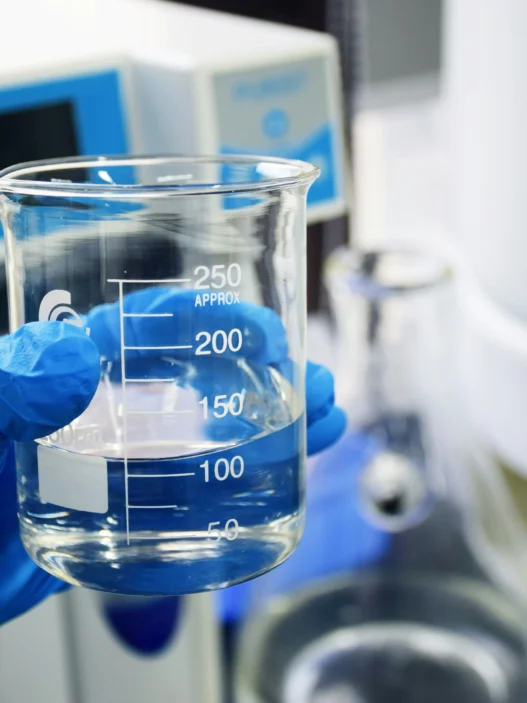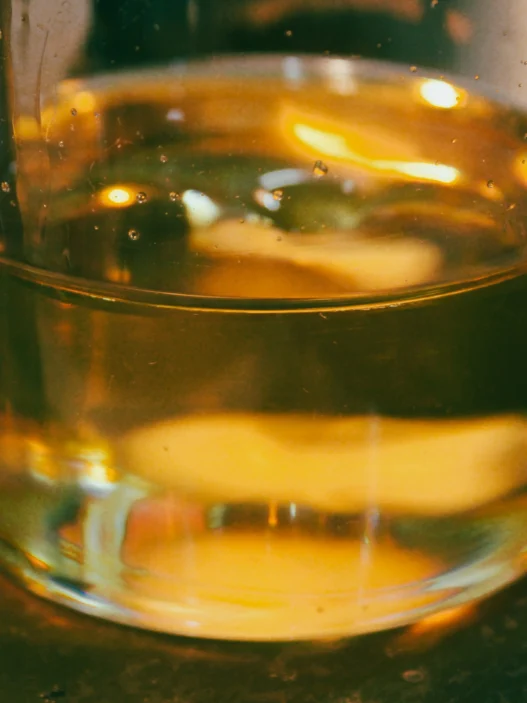Hypotaurine, a naturally occurring amino acid derivative, plays a significant role in various biochemical processes within the human body. It is particularly important for the regulation of osmotic pressure, maintenance of cell integrity, and protection against oxidative stress. Moreover, hypotaurine has been found to have potential therapeutic applications in the treatment of cardiovascular diseases, liver disorders, and neurological conditions. In summary, hypotaurine’s physiological functions underscore its relevance to everyday life as a crucial contributor to overall health and well-being.
Table of Contents:
- 💡 Commercial Applications
- ⚗️ Chemical & Physical Properties
- 🏭 Production & Procurement
- ⚠️ Safety Considerations
- 🔬 Potential Research Directions
- 🧪 Related Compounds
💡 Commercial Applications
In commercial and industrial applications, Hypotaurine is primarily utilized as a component in skincare products and cosmetics due to its potential antioxidant and anti-inflammatory properties. Its ability to help reduce oxidative stress and protect skin cells makes it a valuable ingredient in anti-aging creams and other beauty products.
Hypotaurine also finds use in the food industry as a flavor enhancer and preservative, particularly in products such as sports drinks and nutritional supplements. Its role in stabilizing and protecting food ingredients from oxidation and deterioration contributes to its popularity in the food manufacturing sector.
In the realm of drug and medication applications, Hypotaurine is being studied for its potential therapeutic effects on various health conditions, including eye diseases such as glaucoma and diabetic retinopathy. Research indicates that Hypotaurine may help protect retinal cells from damage and improve overall eye health, making it a promising candidate for future ophthalmic treatments.
⚗️ Chemical & Physical Properties
Hypotaurine is a crystalline powder that is typically white in appearance. It has a faint odor that is generally unnoticeable to the human nose.
The molar mass of hypotaurine is approximately 125.15 g/mol, and its density is around 1.455 g/cm3. Compared to common food items, hypotaurine has a higher molar mass but a similar density to substances such as salt and sugar.
Hypotaurine has a melting point of about 270°C and a boiling point of around 290°C. In comparison to common food items, hypotaurine has higher melting and boiling points than substances like butter and chocolate.
Hypotaurine is highly soluble in water and has a low viscosity. Compared to common food items, hypotaurine is more soluble in water and less viscous than substances like honey and molasses.
🏭 Production & Procurement
Hypotaurine is a naturally occurring compound that can be produced through various biochemical pathways. One method of production involves the conversion of cysteine into cysteic acid, followed by reduction to form hypotaurine. This process typically occurs in the liver and kidney of animals, where hypotaurine plays a role in antioxidant defense.
Hypotaurine can be procured from various natural sources such as seafood, meat, and dairy products, which contain high levels of cysteine, a precursor to hypotaurine. Additionally, supplements containing hypotaurine are commercially available for purchase. The compound can be transported in its pure form or as part of a supplement, in accordance with regulations set by governing bodies.
In order to procure hypotaurine, individuals may choose to consume foods rich in cysteine or opt for dietary supplements. These supplements are typically available in powder or capsule form, allowing for convenient intake. It is important for consumers to adhere to recommended dosage guidelines when supplementing with hypotaurine to avoid any potential adverse effects.
⚠️ Safety Considerations
Safety considerations for Hypotaurine involve handling the substance with care to prevent skin and eye irritation. It is important to use personal protective equipment such as gloves and safety goggles when working with Hypotaurine to avoid any potential contact with the skin or eyes. In the event of contact, it is recommended to rinse the affected area with water for several minutes.
Hazard statements for Hypotaurine include the substance being irritating to the skin, eyes, and respiratory system. It may cause skin sensitization and serious eye damage. Inhalation of Hypotaurine dust or vapors may also cause respiratory irritation. It is important to handle this substance with caution and follow proper safety protocols to minimize risks.
Precautionary statements for Hypotaurine involve avoiding skin or eye contact by wearing protective equipment such as gloves and safety goggles. It is recommended to work with Hypotaurine in a well-ventilated area to prevent inhalation of vapors or dust. In case of skin or eye contact, it is advised to rinse the affected area with water and seek medical attention if irritation persists. Proper storage of Hypotaurine in a cool, dry place away from incompatible materials is also recommended to ensure its stability and safety.
🔬 Potential Research Directions
One potential research direction for hypotaurine could involve investigating its role as an antioxidant in various biological systems. Understanding how hypotaurine neutralizes free radicals and protects cells from oxidative damage could have implications for treating a variety of diseases related to oxidative stress.
Another area of study could focus on the potential neuroprotective effects of hypotaurine. Research could explore how hypotaurine influences neuronal function and may have therapeutic applications in conditions such as Parkinson’s disease, Alzheimer’s disease, and other neurodegenerative disorders.
Additionally, researchers could investigate the impact of hypotaurine on metabolic pathways and energy production in cells. By elucidating the mechanisms through which hypotaurine affects metabolism, scientists may uncover novel targets for drug development and potential therapeutic interventions for metabolic disorders.
🧪 Related Compounds
One compound similar to hypotaurine based upon molecular structure is taurine. Taurine, also known as 2-aminoethanesulfonic acid, is an organic acid found in animal tissues. Like hypotaurine, taurine contains a sulfonic acid group and an amino group, making it structurally similar to hypotaurine.
Another compound similar to hypotaurine is cysteic acid. Cysteic acid is a derivative of cysteine, an amino acid containing a thiol group. Cysteic acid undergoes oxidation to form a sulfinic acid, similar to the sulfonic acid group found in hypotaurine. Structurally, cysteic acid shares similarities with hypotaurine due to the presence of the sulfonic acid group.
Furthermore, another compound with a similar molecular structure to hypotaurine is melamine. Melamine is an organic compound containing a triazine ring with three amino groups. Like hypotaurine, melamine contains amino groups and nitrogen atoms in its structure. Melamine is commonly used in the production of plastics and resins, sharing structural similarities with hypotaurine.




